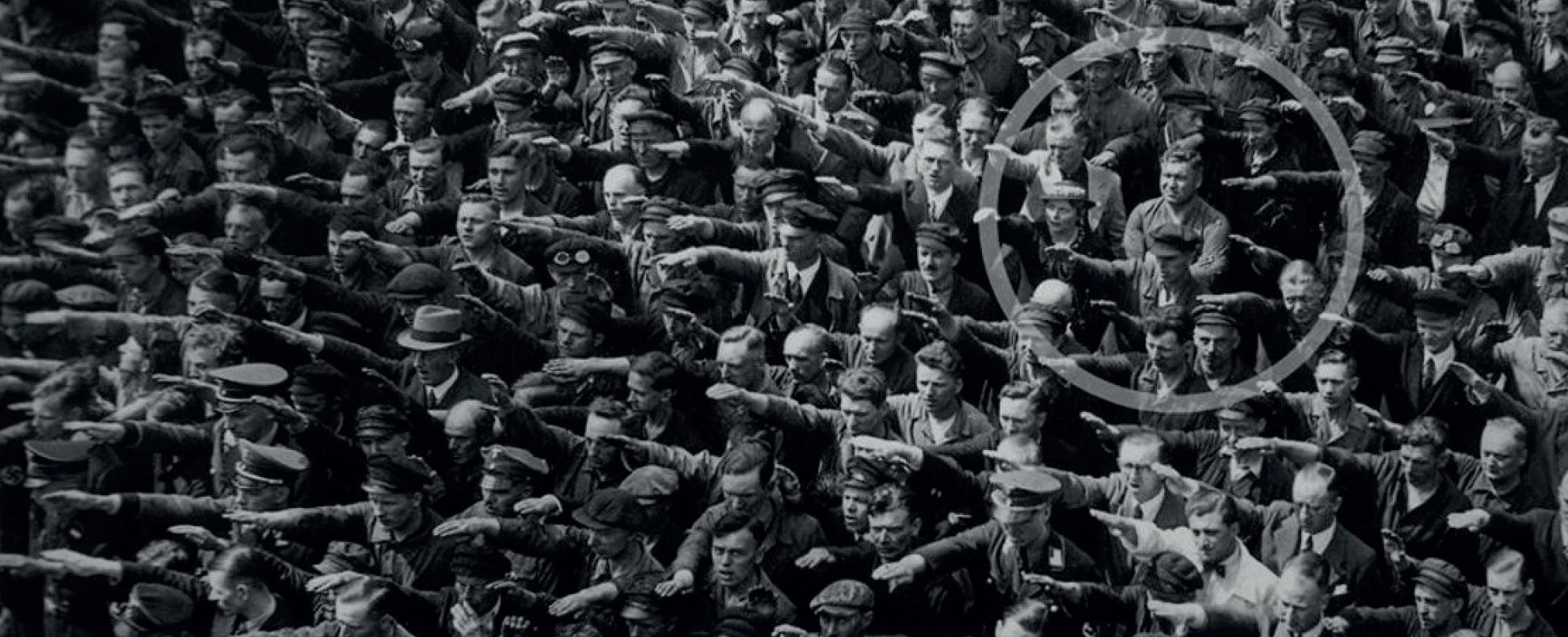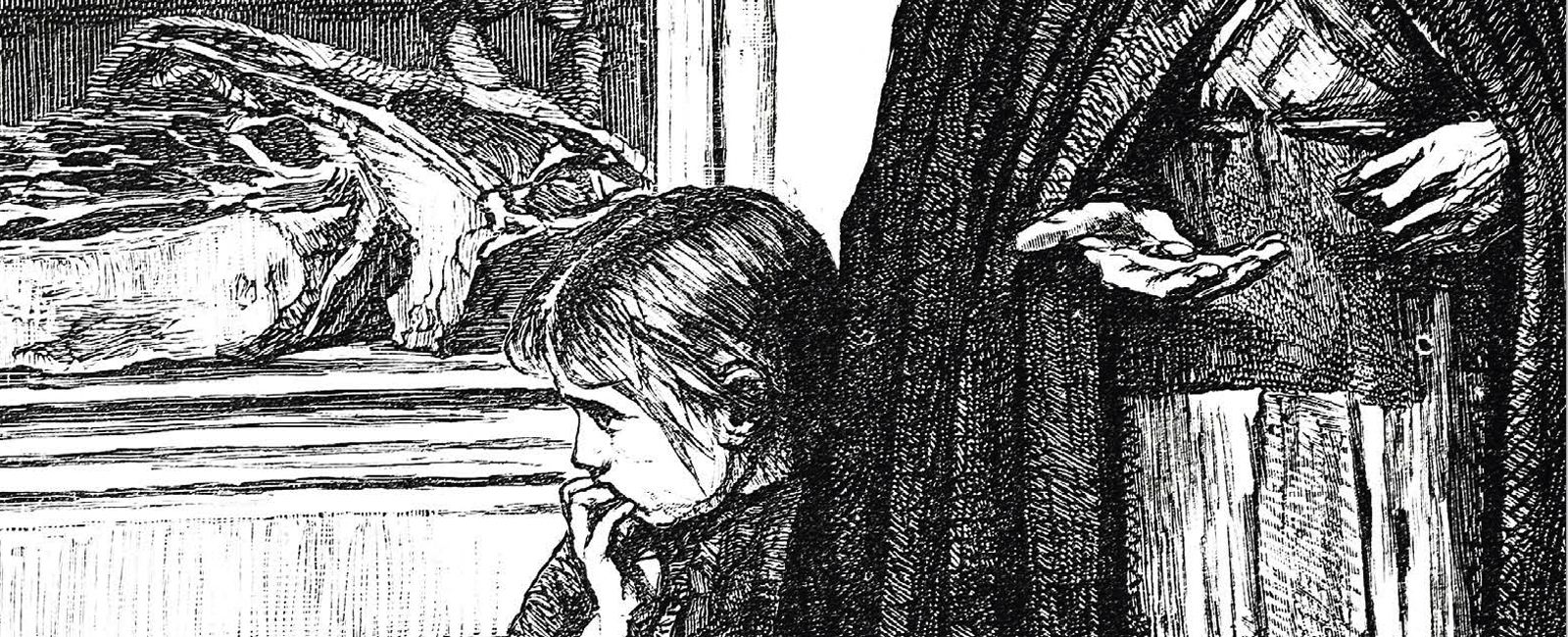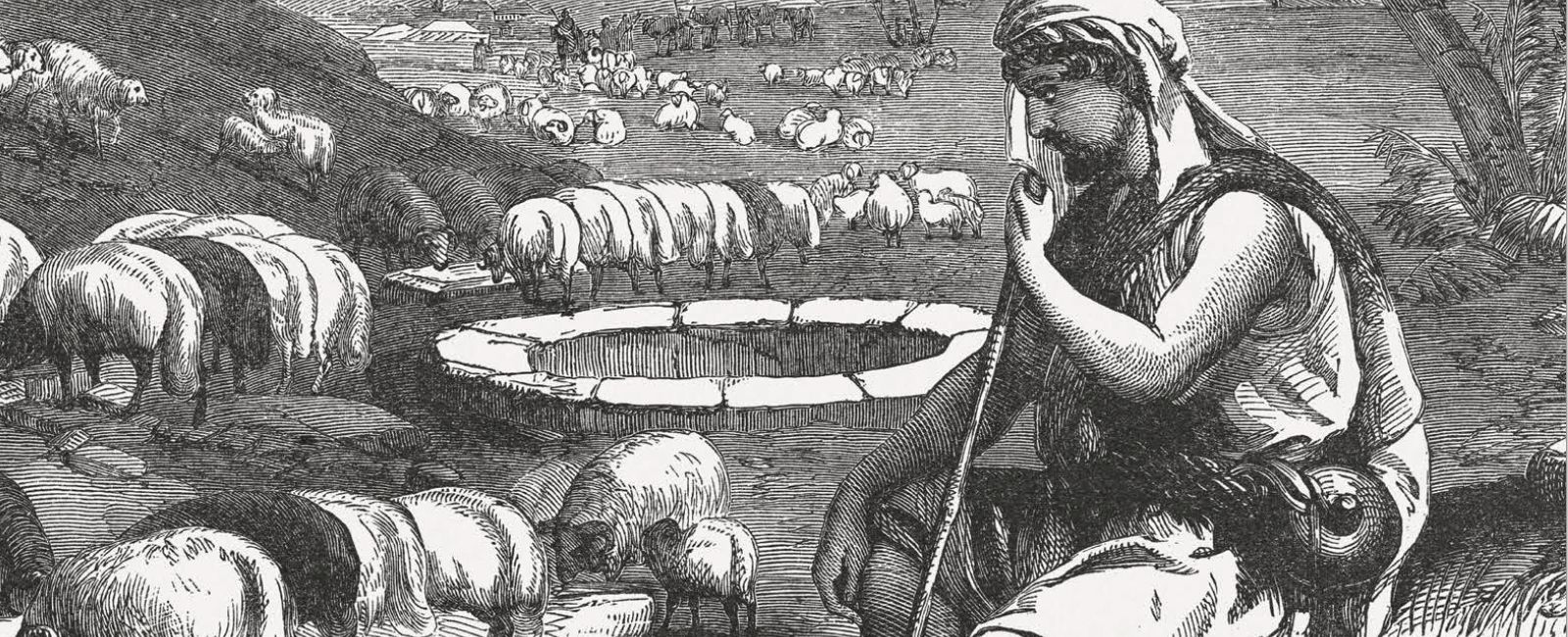All In: What are you 'all in' for?

Pictures, they say, are worth a thousand words. The accompanying photograph, taken at the Blohm & Voss shipyard in Hamburg, Germany, has its own story to tell. The date was June 13, 1936, and the occasion was two-fold. First, shipyard workers were witnessing the launch of the new German navy training ship Horst Wessel. Second, to commemorate the ship launch, workers had gathered to hear a speech filled with Nazi propaganda from Deputy Fuhrer Rudolf Hess. Adolf Hitler was reportedly at Hess’ side. Possibly due to agreement with Nazi teachings, or possibly due to sheer compulsion, all shipyard employees in the photo have their right arms raised to publicly display their allegiance to the Nazi party. Except for one.
With arms crossed, the conspicuous worker in the photograph apparently refused to salute the Fuhrer. Due to the passing of time and the lack of clarity in the photograph, the identity of the worker remains difficult to definitively establish. Two names have been put forth over the years––August Landmesser and Gustav Wegert. Both names have been put forth for good reason. Both were reportedly employees of Blohm & Voss in 1936, both had a physical resemblance to the uncompromising man in the photograph, and both had reason to distance themselves from the Nazi party. August Landmesser had joined the Nazi party in 1931 in hopes that it would strengthen his employment prospects. He was expelled from the party in 1935 when he became engaged to Irma Eckler, a Jewish woman. History records that Landmesser refused to break off the engagement and eventually married Irma. They had two daughters together but the Nazi party during World War 2 would not forgive them for breaking the Nuremberg intermarriage laws concerning Germans and Jews. Irma was eventually killed in the Ravensbruck women’s concentration camp and August died in Croatia while serving, under draft compulsion, in a Nazi penal battalion. Gustav Wegert has also been advocated in more recent years as the non-saluter’s identity. He was a Christian and was reported to respond with “Guten Tag” (“Have a good day”) when someone greeted him with “Heil Hitler”. Gustav believed that much of the Nazi party’s teachings contradicted that of the ultimate authority—God Himself. Although warned by his employer multiple times regarding his ‘insubordination’, Gustav was spared significant punishment as his superiors viewed him as a qualified and valuable company employee. Despite Gustav’s life being spared by the Nazi party, he was willing to risk paying the ultimate price for a belief he could have chosen to hold only privately.
Scripture is also replete with examples of men who were willing to pay a price for standing for righteousness and truth. Think Paul, Daniel, Shadrach, Meshach, Abednego, the apostles, king David, Noah or even Jesus Christ Himself. One could list dozens of other saints from the Scriptures. Countless others, nameless in the annals of history, have also refused to bow to the conforming pressures of the world. Some were spared their physical lives while some, under the Lord’s sovereign hand, were martyred. However, they all suffered in a variety of ways. Some had their character and good works maligned. Others had their physical well-being under frequent threat of harm. The apostle Paul told Timothy, his younger son in the faith, that “All who desire to live godly in Christ Jesus will suffer persecution.” (2 Timothy 3:12) Peter wrote, “Beloved, do not think it strange concerning the fiery trial which is to try you, as though some strange thing happened to you; but rejoice to the extent that you partake of Christ’s sufferings, that when His glory is revealed, you may also be glad with exceeding joy.” (1 Peter 4:12-13)
What then does suffering for Christ look like? Using Luke 6:27-36 as a pattern, we suffer for Christ in our daily lives when we:
• love our enemies and do good to those who hate us and our Saviour
• bless those who curse and malign our reputation
• don’t fight back out of pride and strife
• give sacrificially to those who cannot repay us
• love the unlovable, whether they are family, neighbours or strangers
Living this type of life is a work of the Holy Spirit in our hearts. It can only be genuinely accomplished via the Lord’s power. We cannot conjure up this ability from our human nature.
There is also a type of suffering that the Lord does not desire for a Christian. What could this be? 1 Peter 4:15 says, “But let none of you suffer as a murderer, a thief, an evildoer, or as a busybody in other people’s matters.” Some suffering comes upon us as a result of our disobedience to the Lord rather than from our obedience to Him. This suffering is not glorifying to Him. We need to discern if our trials are a result from ungodly living or for living for Christ. If our sin is the cause we need to repent from our sin rather than merely asking the Lord for grace to persevere. I would suggest that a high percentage of suffering amongst believers in our culture arises from knowingly making poor life choices and stubbornly refusing to mend broken relationships. Sadly, many relationships in our lives are broken, not because of our Godly testimony, but because of our unforgiveness towards others to whom we should be showing mercy.
Let’s consider the photograph once again. Two ‘camps’ are clearly represented. On one hand, the majority camp is ‘all in’. They are following the mainstream viewpoint of the time and appear unable or unwilling to stand for the side of truth and righteousness. The lone man in the photo (his identity is unimportant now) is also ‘all in’ despite being alone. You see, we are always ‘all in’ for something. The question remains: Are we ‘all in’ for the Lord’s kingdom or for the fleeting pleasures and distractions of this life?
“No one can serve two masters; for either he will hate the one and love the other, or else he will be loyal to the one and despise the other. You cannot serve God and wealth.” (Matthew 6:24)









